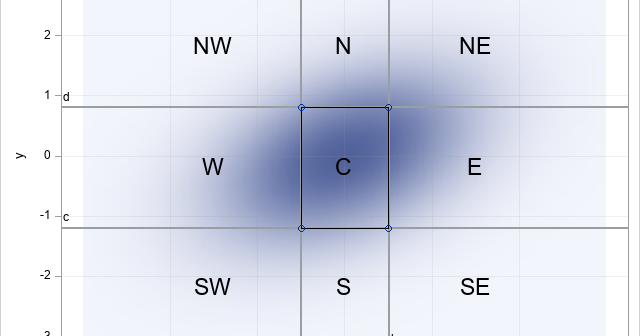The DO Loop
Statistical programming in SAS with an emphasis on SAS/IML programs
These are a few of my favorite things. —Maria in The Sound of Music For my annual Christmas-themed post, I decided to forgo fractal Christmas trees and animated greeting cards and instead present a compilation of some of my favorite data visualization tips for advanced SAS users. Hopefully, this

A previous article discussed how to compute probabilities for the bivariate standard normal distribution. The standard bivariate normal distribution with correlation ρ is denoted BVN(0,ρ). For any point (x,y), you can use the PROBBNRM function in SAS to compute the probability that the random variables (X,Y) ~ BVN(0,ρ) is observed

This article shows how to use SAS to compute the probabilities for two correlated normal variables. Specifically, this article shows how to compute the probabilities for rectangular regions in the plane. A second article discusses the computation over infinite regions such as quadrants. If (X,Y) are random variables that are

The collinearity problem is to determine whether three points in the plane lie along a straight line. You can solve this problem by using middle-school algebra. An algebraic solution requires three steps. First, name the points: p, q, and r. Second, find the parametric equation for the line that passes

Plot rates, not counts. This maxim is often stated by data visualization experts, but often ignored by practitioners. You might also hear the related phrases "plot proportions" or "plot percentages," which mean the same thing but expresses the idea alliteratively. An example in a previous article about avoiding alphabetical ordering

Converting a program from one language to another can be a challenge. Even if the languages share many features, there is often syntax that is valid in one language that is not valid in another. Recently, a SAS programmer was converting a program from R to SAS IML. He reached
